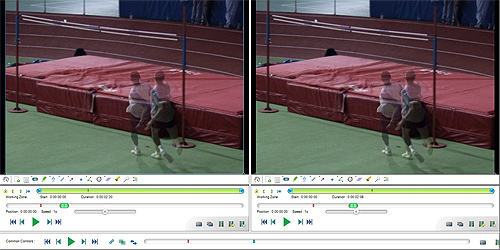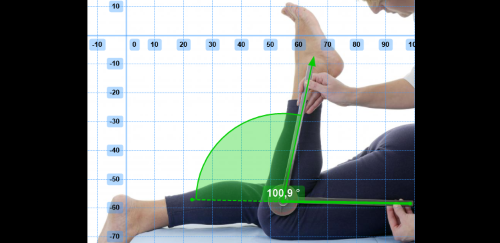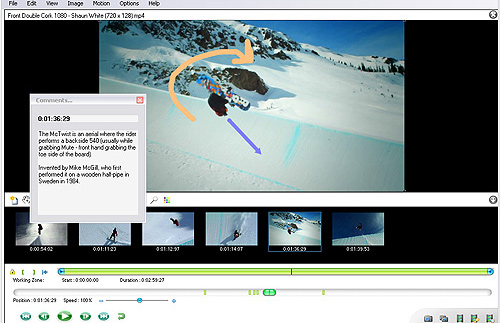

Objective measures of assessment of running gait help to understand abnormal biomechanics that may contribute to injury in runners(10). ‘Overstriding’ is one such running pattern that consists of excessive hip flexion & knee extension at initial contact, resulting in a greater loading to the hip and knee joints and a higher risk for injuries (6,9). Additionally, sagittal plane kinematics of the hip & knee has also been shown as a very useful indicator of joint kinetics & ground reaction forces(8). In order to decrease the frequency and the impact of running-related injuries (RRI), and establish sufficient prevention strategies it is important to understand the etiology and mechanisms associated with these injuries(7).Ī common risk factor behind many running related injuries is the increased joint load at the moment of initial contact (foot strike)(8). A majority of these injuries include patellofemoral pain syndrome, iliotibial band syndrome and stress fractures to the tibia and metatarsal bones(6). The injury among runners training for a marathon has been recorded as high as 90 % (4), while the annual cumulative injury incidence proportion in a general running population has been reported up to 85% (5).

With an increase in the running activity all over the world, studies have reported a rise in the running-related injuries both at competitive and recreational level(3). This increase is even greater in Asian countries with India leading the statistics with a 154.78% growth in marathon runners from 2009 to 2014(2). Statistics show that there are approximately 2 million(1) recreational runners in the UK and an estimated 10 million in the US. The popularity of running as a sport and recreational activity has risen up remarkably in the past few years. Key words: kinematics, 2D motion analysis, running, knee and hip angles, validity, reliability The ICC values (intra-rater reliability) for the hip and knee were 0.998 and 0.990 respectively whereas ICC values (inter-rater reliability) of 0.996 and 0.978 were computed for the hip and knee respectively.Ĭonclusion: The strong validity and excellent inter- and intra-rater reliability results establish a concrete foundation for use of GaitON- a 2D motion analysis system as a tool for evaluating the running gait of a patient in a clinical setup. Results: The angles quantified using GaitON were significantly correlated with the angles quantified in Kinovea with r = 0.997 p = 0.01 for the hip and r = 0.982 p = 0.01 for the knee. The intra-rater reliability, inter-rater reliability, the limits of agreement (LOA) in the Bland-Altman plot were also determined. Two blinded raters quantified joint angles on video using GaitON and Kinovea software. Methods: 21 healthy male recreational runners were recorded using a clinical 2D video setup during over-ground running. Objective:To investigate the convergent validity, inter- and intra-rater reliability of a 2-D motion analysis system (GaitON) for quantification of hip and knee kinematics at initial contact during running.
#WHERE IS THE SPEED DATA KINOVEA SOFTWARE#
Under these circumstances, use of motion analysis software with inbuilt running gait analysis protocols help to improve the reliability of data.

Observational methods of assessing gait are largely dependent on clinicians’ ability to quantify and analyze the kinematic data in a reliable manner. 2D motion analysis systems are being widely used at a clinical level for quantification of kinematic parameters during running gait analysis. Introduction: Analysis of running gait is necessary for prevention of hip and knee injuries.


 0 kommentar(er)
0 kommentar(er)
